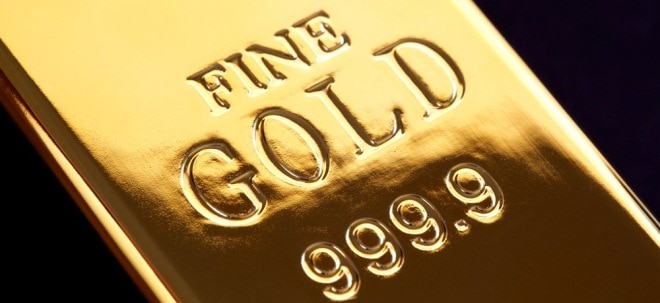Gold looks good on Trump tariffs, tax cuts
Donald Trump’s presidential win is likely to be gold positive in the medium term, according to John Reade, chief market strategist for the World Gold Council.The potential for higher inflation, tax cuts and larger budget deficits alongside concerns over US dollar weaponization (using the currency as a foreign policy tool through sanctions and access to dollar-based trade and financial networks) could drive increased gold demand, he said during a webinar hosted by BMO Capital Markets just after the election.“It wouldn’t have mattered who’d won. We weren’t going to see the deficit come under control. The risks are probably that they will be higher under Trump, with the tax cuts that will probably follow in the near term,” Reade said. “Gold’s appeal as a hedge against debt and economic uncertainty is likely to persist, even as investor sentiment responds to changing fiscal and monetary policies.”Global geopolitics, with wars in the Middle East and Ukraine, and concerns about an economic slowdown are positive for gold bar and coin sales, according to the council. Lower US interest rates, concerns over the country’s fiscal deficit and high stock prices should help flows into exchange traded funds (ETFs), it said.Strong dollarBut an orderly US political transition and economic stimulus in China work against the case, Reade said. Also, a strong American dollar from Trump tariffs, tax cuts and deregulation, which were expected to drive economic growth, could continue to push investors away from gold like how it fell in the immediate days after the vote.Global stats show large outflows from gold ETFs since the election, according to Bloomberg News. Physical gold ETF holdings dropped 601,000 oz. from Nov. 10 to Nov. 17, including a 265,000-oz. single day reduction reported on Nov. 11. With this, gold holdings are now down 3% compared with this point last year. Silver ETF holdings dropped 7.5 million oz., but are still up 5% this year.Other factors like an equity rally and historically lower physical gold demand under Republican leadership also might temper the trend, Reade said.“For gold to continue to do well, we need to see Western investors back in the market. Now, lower interest rates will be a positive catalyst for this to happen. One of the reasons why investors haven’t been buying gold in the West has been because of high US and European interest rates.”US deficitOne issue that could draw Western investors back is the US fiscal deficit. It’s pegged at just over $2 trillion or 7% of nominal GDP. The budget deficit ballooned to $258 billion in October alone, which would have been the year’s total not that long ago, according to BMO.“With little plans in place to adjust the US deficit lower, we can see a situation where into the middle of next year de-dollarization of trade is accelerating once more, supporting gold demand,” BMO Capital Markets research director Colin Hamilton said in a Nov. 14 note.The council’s surveys of central banks show 81% expect gold reserves to increase over the next 12 months, the highest percentage since at least 2019. Emerging markets will drive the buying, it said.Central banks will buy a total 800 to 900 tonnes this year, down slightly from the 1,000-tonne-plus levels of the two previous years.“It’s still extraordinarily healthy and roughly double what we were seeing prior to this pickup, but not at the same level of strength that we saw last year or the year before,” Reade said.Graph courtesy of World Gold Council.Emerging marketsTurkey was a large contributor to gold demand last year, though investors have since pivoted out of gold and into lira-denominated bonds at returns around 50%, he said.In China, some cooling demand for gold might be attributed to retail investors following the central bank, which in May stopped reporting more gold purchases. Chinese government economic stimulus might dissuade investors from buying gold bars and could spur jewelry demand, which is a larger gold sector there than the investment market, he said.“Retail investors were partly attracted to gold because obviously the other investment alternatives, like real estate equities, were poor, but also because the Central Bank of China was buying gold, it was almost like a stamp of approval from the state,” he said. “The cessation in purchases, or reported purchases, by the People’s Bank of China may have played a role in cooling demand.”BitcoinThe shift away from gold immediately after the election was also influenced by rising interest in Bitcoin, which saw record highs during the period.Cryptocurrencies are expected to be more readily adopted under a deregulatory-themed Trump presidency but they are traditionally seen as riskier or the opposite of gold, Reade said.“We see them actually as complementary assets,” he said. “If people do want to strap on more risk by allocating to more crypto assets they will have to, or should be looking at ways to diversify that risk. And there are obvious diversifiers, of which gold is one of the best, if not the best.”FuturesGold futures measured by the managed money positions of COMEX traders were the highest in early November in more than four years at around 800 tonnes of gold, Reade said. Futures helped drive the price of gold up this year and could spark profit-taking, he said.“If we do get profit taking, in other words if these positions start to get liquidated and drop the price, it’s worth saying that those sort of corrections don’t last days,” he said. “They last weeks.”While the gold market fluctuated following the US election, long positions were still near record levels as of Nov. 12, according to the Commodity Futures Trading Commission. Long positions are fuelled by expectations of continued rate cuts by the Federal Reserve as well as the likelihood that Trump’s avowed tariff policy will increase inflation and his tax cuts will widen fiscal deficits.Graph courtesy of World Gold Council.Gold equitiesGold company stocks have returned to be a compelling investment because forecast free cash flows are around 12% of company market capitalizations while capital spending is better allocated, BMO precious metals and mining analyst Raj Ray said during the call.“Gold equities, for the first time ever, have the opportunity to offer cash returns commensurate with their asset duration, which is, for an average miner, 15 years,” Ray said. “The sector has actually done a good job of boosting internal capital availability and deleveraging its balance sheet over the last decade.”The intermediate gold sector offers better growth opportunities than the senior space, but the focus across the gold industry needs to shift toward optimizing capital returns rather than prioritizing growth or deleveraging, he said. With stable inflation in the mining sector and improving free cash flow projections, companies have the opportunity to enhance returns through clearer dividend policies, increased payouts and share buybacks, aligning more closely with practices in other resource sectors.“The gold sector needs to boost its capital returns,” Ray said. “There is a pressing need for companies to rethink their policies to meet investor demands and improve returns on invested capital.”JuniorsBut despite the promise of free cash flow and record gold prices this year, there’s been lacklustre investment in stocks, even in senior gold equities, Ray said. The GDX Index, formally known as the VanEck Gold Miners ETF (GDX), an exchange-traded fund that tracks the performance of the NYSE Arca Gold Miners Index, saw outflows of $590 million after Oct. 14. This year to early November, it’s negative $2 billion.“We haven’t seen money trickle in to the extent we expected into the senior gold, but there are pockets of interest within the developer space and it comes down to the quality of the projects,” he said. “It’s going to take some time for the developers to get going as an asset class.”Mining companies face ongoing cost pressures, particularly from persistent wage growth and skilled labour shortages, despite declining consumables and energy prices, Ray said. Recent cost increases reflect efforts to address years of underinvestment in sustaining and exploration capital, with 2024 all-in costs averaging $1,900 per ounce.Still, at current gold prices around $2,600 per oz., the sector retains a healthy margin, supporting capital returns to investors alongside incremental growth and maintenance spending, the analyst said. As new, lower-cost mines come online, these dynamics are expected to stabilize, maintaining the sector’s profitability into 2025.Gold mine outputProduction from gold mines is expected to reach an all-time high this year approaching 4,000 tonnes, according to the council. The last record was in 2018 before the industry navigated Covid-19 and other challenges, Reade said. The outlook is for production to plateau or show limited growth for a few years before longer-term constraints take hold, he said.“Finding new mines, bringing them on stream, replacing reserves, is an increasing challenge for the developed market gold mining companies,” he said. “I don’t think we’re about to see a period of growth like we saw between 2008 and 2018, rather perhaps a modest growth in the next year or two.”Recycling, which is driven by the gold price instead of discoveries or permitting, is growing year on year and over the past few years, but it’s not back to the levels during the global financial crisis.“I guess the missing ingredient here is unemployment. So yes, we’ve got super high prices,” he said. “But there isn’t, perhaps, the economic necessity that we’ve seen previously.”Weiter zum vollständigen Artikel bei Mining.com
Quelle: Mining.com


